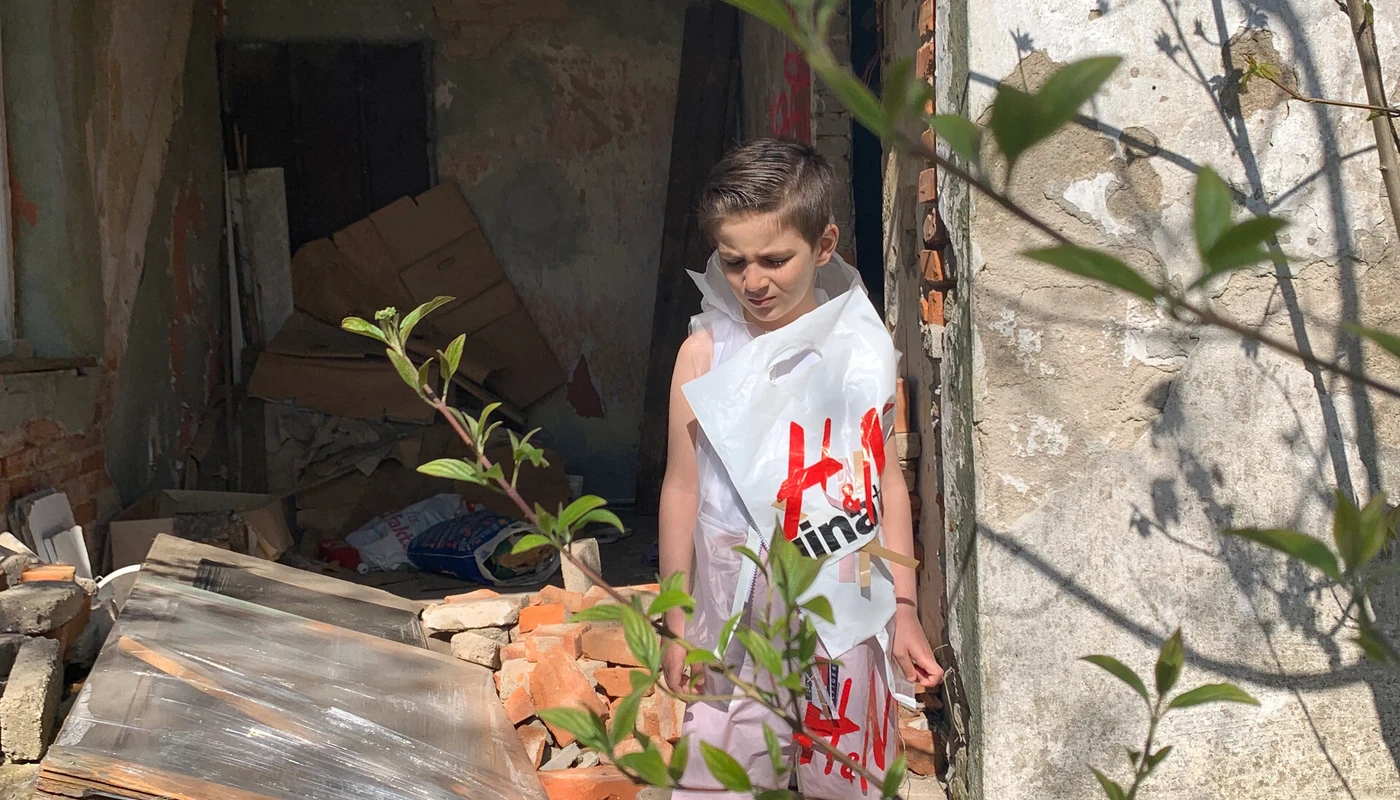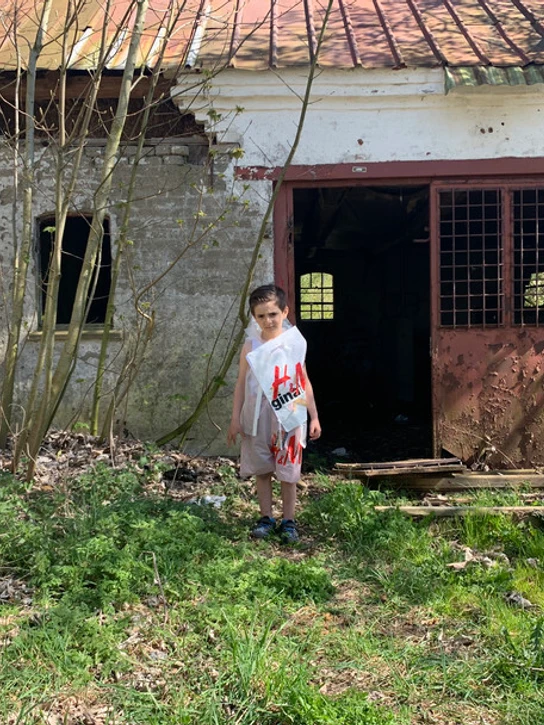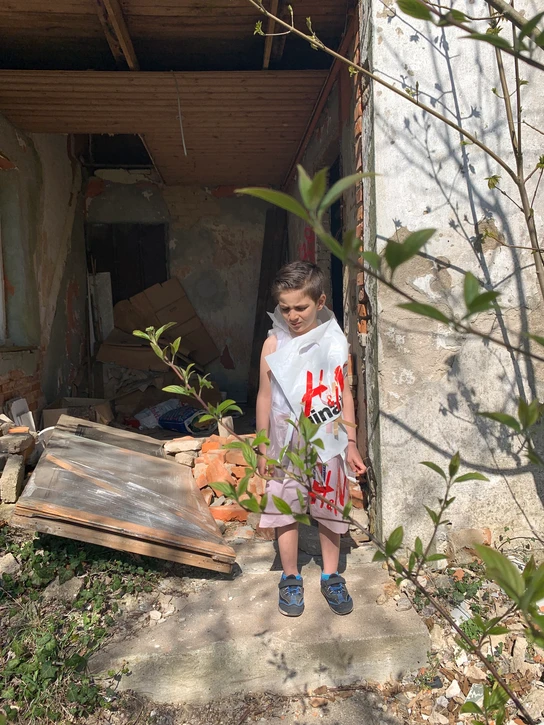
Donations feeling like plastic by Mona El-Qut
- Students
-
- Education
- Master
- Subject area
- Fashion Design
- Focus area
- Design for People
- Year
- 2019
- Education project type
- Course
What
An outfit made out of plastic bags with brand logos all over it representing the observed “brand-focused clothing” donated to children in refugee camps, in Lebanon. The outfit is a physical illustration of how it actually feels not to receive solution-based clothing.
“It is like wearing plastic bags, it doesn’t keep us warm” – Interview with a Syrian girl, 10 years old.
Why
Most Non-governmental organizations encourage people to donate clothing to refugees, which might seem like great support at the moment. Yet most of the donated clothing does not meet the actual need, as refugees must prepare for another winter in fragile tents and shelters, with temperatures falling as low as -12 ℃. Many refugee children are seen wearing the wrong sizes, flip-flops in minus degrees, branded clothing and even costumes, which do not live up to their fragile life conditions in camps.
In recent years, the number of refugees has dramatically increased all over the world as a result of migration caused by wars. In fact, according to data by the United Nations, it is expected that the number of international immigrants in the world will reach 405 million by 2050 if migration continues to increase as rapidly as it has over the last 20 years.
For that reason, Non-governmental organizations and donors should start considering how to meet the actual need of millions of people, as the donated clothing is not always meeting the need that the refugees have and are often causing a myriad of other problems for people in a crisis.

How
The aim of this project is to generate a debate through critical design and thereby tell a message of the actual need of refugee children situated in refugee camps. Furthermore, it will act as an inspiring reminder of the harsh reality of refugee’s life, that provokes collaborative consumption, that enables consumers/contributors of society to provide and obtain valuable services/resources among contributors/people/donators and Non-governmental organization’s to consider their type of donation within clothing, to inspire solution-based help appealing to refugees’ life situation.
Nevertheless, it identifies ways to evoke empathy and inspire social action by the use of plastic bags to illustrate the purposive function and value of the donated clothing during the cold seasons.
